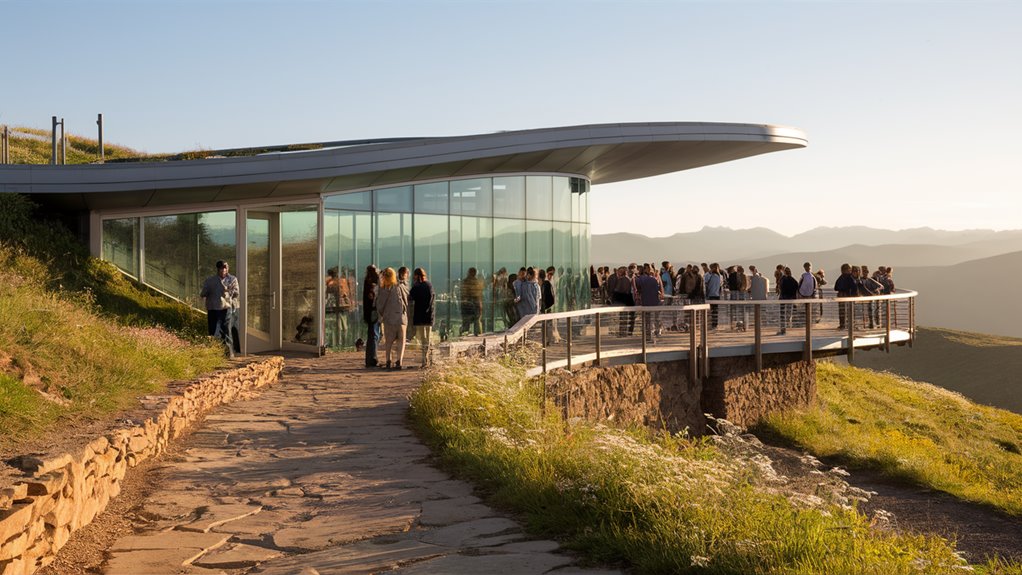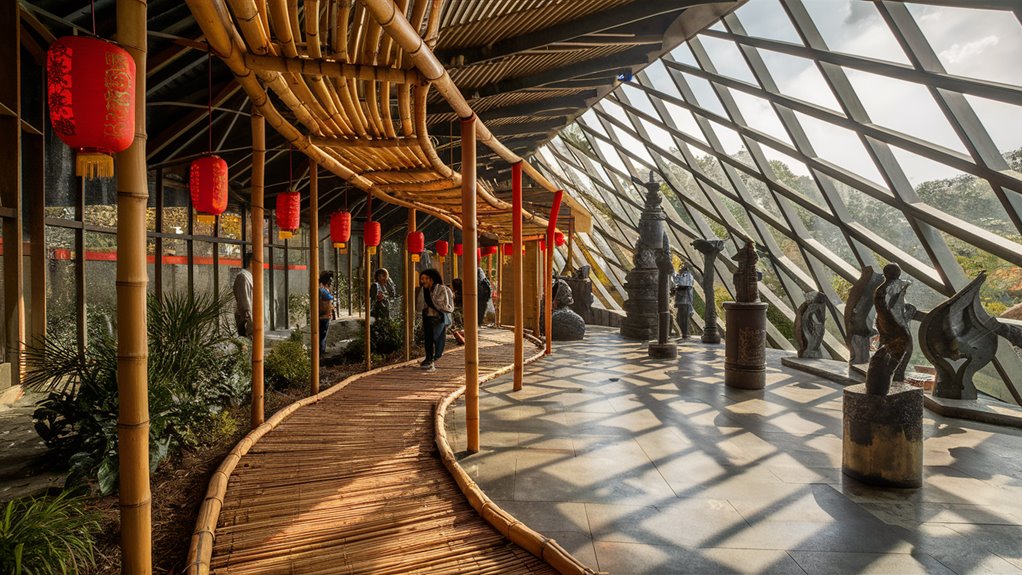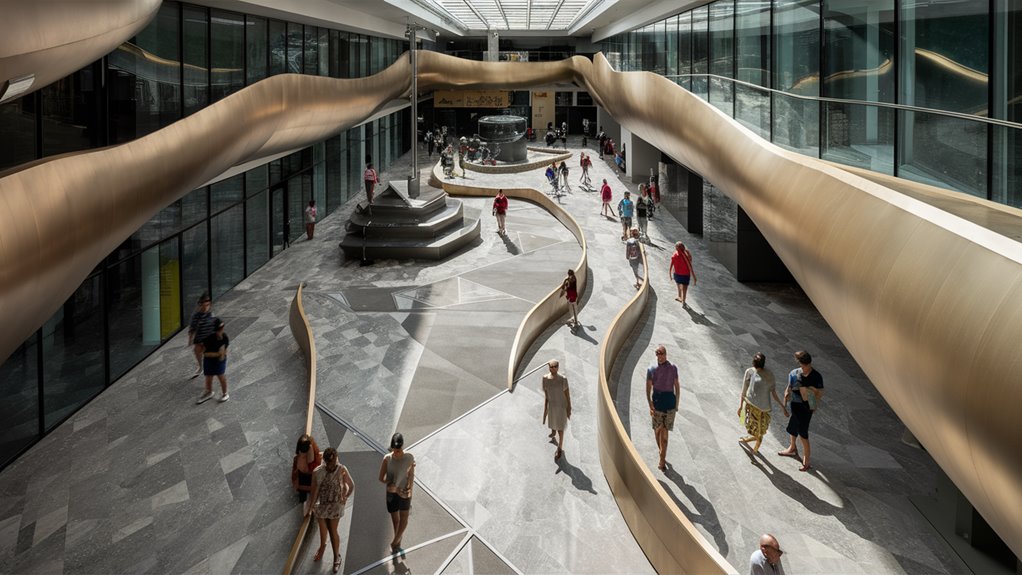
Tourist Site Design: Drawing More Visitors with Smart Spaces

Building Fun Tourist Areas
Nice design in tourist spots can really pull in more visitors by picking designs based on solid proof. Using natural light, simple signs, and real local pieces builds spots where people feel welcome and linger longer. https://maxpixels.net/
Key Design Elements for Tourist Wins
Nice places to take pictures and spots good for Instagram act like free ads, passing the word by sharing online. Comfy rest places and hands-on local displays change basic spots into must-visit places, making folks stay longer and come back.
Design for Eco-friendly Tourism
Green design elements are crucial in modern tourism spots. Living building parts like green roofs and local materials bring two major benefits:
- Helping the environment and sustainable use
- Creating memorable experiences that stick with tourists
- Improved authenticity that gets people talking
Enhance Visitor Flow and Time
Clever spacing plans improve visitor happiness by:
- Clear sightlines to main attractions
- Well-placed restrooms and shops
- Smart crowd management
- Design elements that make exploring enjoyable
These tourist design principles create deep spaces that keep drawing more visitors and boosting fun rates.
How Design Affects Tourists
Design Thinkers in Tourist Zones: Creating Memorable Moments
The Appeal of Clever Design Elements
Tourist spots use lots of design ideas that shape how visitors feel, their comfort, and the overall vibe.
Smart space design transforms places from simple to impactful, touching guests in various ways.
Colors and Lighting for Atmosphere
Smart color use is a main tool in setting tourist spaces. Blues and greens create calm areas in hotel corridors, while warm colors inspire chatting in communal areas.
Effective lighting connects to local places well, while thoughtful artificial lighting guides visitors and sets the right atmosphere.
Eco-Friendly Design and Local Practices
Eco-friendly design parts and sustainable materials meet visitors’ desires for nature while honoring local traditions.
Blending local building practices and local materials reduces environmental impact while creating authentic experiences.
Fixed design guidelines work with local style elements to create comfortable spots liked by all travelers.
Main Design Focus:
- Consider environmental impact in tourist areas
- Authentic local ambiance through design
- Incorporating green building methods
- Improving comfort for visitors
- Handling how people move
Top Photo Spots
Leading Design Elements for Photos
Clever photo spot design requires a smooth blend with a place’s real character.
The best locations use nature and key local landmarks rather than artificial elements that might lessen the experience.
Essential Points for Top Photo Places
Three key factors drive great photo spots:
- Using what’s there like archways, trees, and buildings
- Smart lighting plans for sun positions and special lighting moments
- Elements that tell local stories, show local architecture, and nature
Guiding Visitors Effectively
Employing simple signs enhances the photo moments while preserving the site. Main tactics include:
- Smart paths that guide how tourists walk
- Small markings on the ground for where to stand for photos
- Strategies for crowd control to avoid overcrowding
Protecting Local and Natural Elements
Well-planned photo spot designs balance fun for guests with care for the site by:
- Being considerate about placement in sensitive cultural areas
- Merging well with what’s already there
- Sustainable constructions that help preserve the site long-term
These well-crafted photo locations open doors to deeper place enjoyment, rich visitor experiences, and safe, significant cultural and natural elements.
Signage and Managing Movement
Signs and Managing Movement: Smart Design for Improved Experiences

Enhancing Movement Through Spaces
Effective sign systems are vital for top visitor enjoyment and photo opportunities.
Smart movement of tourists creates an effortless journey through places, being gentle on the environment and reducing stress for visitors.
Main Elements for Effective Signage
Directions and Local Integration
Clear signs blend with natural movement paths and maintain local character.
Universal signs combined with local art achieve clarity while respecting local traditions.
Online tools and apps complement physical signs, aiding in crowd management on the move.
Natural Movement and Eco-friendly Practices
Movement patterns should align with how we naturally navigate, requiring fewer signs and preserving the authentic site feel.
Eco-friendly signs use environmentally gentle materials and minimal land alterations, keeping nature safe.
Smart Strategies for Handling Groups
Positioning rest areas, viewpoints, and information spots creates natural pauses in how people move.
This intelligent layout disperses people, prevents large group gatherings at key points, and protects sensitive areas from overcrowding.
Enhanced crowd management improves visitor satisfaction and preserves site quality.
New Tools for Signage
Digital signage options work well alongside traditional signs, providing real-time assistance and information on crowd distribution.
These tools transform how we manage visitors and enhance the overall trip by intelligent traffic strategies.
Culture in Design
Culture in Design: Crafting Authentic Tourism Locations
Incorporating Local Traditions in Tourist Areas
Local traditions are key for authentic design vibes in tourist spots.
Places that incorporate local elements into their architecture create unique connections distinguishing them from others.
Merging Old and New Design
Incorporating local design elements requires a mix of traditional methods and modern application.
Using local materials, local art, and traditional architectural styles elevates spaces while maintaining accessibility.
Local fabrics turned into design elements and old designs in new signage illustrate this seamless integration.
Creating Engaging Cultural Points
Interactive cultural zones are crucial spots where tourists truly engage with local customs.
Immersive design elements like hands-on demonstrations of local crafts and special areas for local rituals create real connections.
These immersive design elements shift from mere observation to participation, letting visitors forge strong bonds with local customs and activities.
Key Design Elements:
- Utilizing local materials
- Traditional architectural styles
- Incorporating local art
- Hands-on cultural displays
- Areas for ritual activities
- Wayfinding mixed with heritage
Green Design in Tourism
Green Design in Tourism: Building Places That Care for the Earth
Designing for Minimal Harm to Nature and Benefits for Locals
Eco-friendly travel construction demands wise design choices that balance nature care with advantages for locals.
Environmentally friendly buildings employ new materials, efficient energy methods, and comprehensive waste reduction plans, transforming locations into green destinations that attract eco-conscious tourists.
Blending with Nature and Traditional Methods
Creating areas that harmonize with the natural world is central to green tourism design.
Using local materials and traditional construction methods maintains authentic feel while being mindful of landscapes.
Green construction elements like living roofs, water collection systems, and energy-efficient air systems provide benefits for the environment and enhance visitor experiences. Online Casino Experience
Adaptable Design and Educational Opportunities
Future-ready tourist spots are forthcoming trends in spatial planning.
Adaptable design elements and multi-use areas ensure longevity while responding to visitor needs.
Educational features about nature, such as informative displays and hands-on exhibits, draw tourists into conservation efforts. Effective signage systems guide visitors through these areas while fostering a love for preserving nature, ensuring these places remain cherished for the long term.
Eco-friendly travel components must include:
- Efficient energy buildings
- Local construction elements
- Waste management plans
- Water conservation methods
- Educational sections
- Flexible design elements